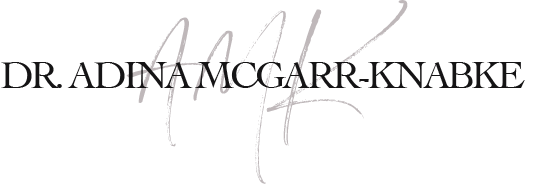
by Dr. Adina McGarr | Aug 8, 2014 | Addiction, Eating Disorders
I provide therapy to patients who are dealing with eating disorders such as Anorexia, Bulimia, and Binge Eating Disorder, as well as disordered eating styles that do not meet criteria for an eating disorder. These are serious conditions that wreak havoc on patients by affecting their sense of self, their health, their relationships, and their well being. All of which ultimately diminish one’s ability to participate fully in daily activities.
After a general medical condition has been ruled out, I work with patients in therapy to determine the underlying psychological and emotional causes for their condition. In addition to the underlying factors contributing to one’s eating disorder, they also serve as powerful coping mechanisms. We associate food with memories, use it to make ourselves feel happy when we are sad, rely on it as a way of showing love for our families, and sometimes even punish ourselves with it. My goal is to help patients understand why they interact with food the way they do, so that we can work together to build a life that doesn’t revolve around food.
Understanding Food Addiction
It can be helpful to understand why food is so addictive in the first place. Research has shown that the same pleasure and reward centers of the brain that are triggered by addictive drugs like heroin and cocaine are also activated by food.
Highly palatable foods that are rich in sugar, fat, and salt trigger the release of brain chemicals, like dopamine, that just make you feel good. For some individuals, the neurochemical structure of their brains may predispose them to either being more sensitive to the chemicals released when eating highly palatable foods or less responsive, meaning it takes eating more of the food to elicit the same pleasure response. Over time, this can override normal feelings of satisfaction, induce cravings, and compel you to eat, even if you’re not hungry. Tolerance can build and despite more food being consumed, the same pleasurable effect is harder to achieve. Once food addiction occurs, eating becomes the primary source of pleasure and reward and the individual is less motivated to engage in other activities that were once appealing.
Signs of Food Addiction
It may be difficult to admit to yourself that you have a food addiction, and it can also be hard to identify in others, as there is a significant amount of shame and secrecy around food addiction. Below are some questions that may help identify in an addiction is present.
- Does it often feel like you are eating more than you planned, especially when it comes to certain foods?
- Do you feel the need to continue eating those foods, even though you are not hungry any longer?
- How often do you eat so much that you become ill?
- If a certain type of food is not available, what actions do you take?
- Is eating interfering with your ability to work or interact with others?
- Are you embarrassed by how much you eat around others?
- Do you eat in secrecy?
- If you try to cut down, do you experience anxiety, agitation, or any other physical symptoms?
- Have your eating habits caused you to experience depression, self-hatred, or guilt?
- Does it feel like to need to eat more and more just to feel any pleasure at all?
Food addiction may not look the same for everyone. These questions don’t necessarily indicate that you have or don’t have an addiction, but they can be helpful guidelines. If you think there is cause for concern it is always best to check with a medical doctor and a mental health professional.
Getting Help for a Food Addiction
Once a person becomes addicted to food, it is difficult to stop, despite any rational thinking or negative consequences that occur. It may require medical care, treatment for depression, nutritional counseling and physical training combined. Here are a few organizations which can provide further insights into the causes, symptoms, and treatments for food addictions:
- National Association of Anorexia Nervosa and Associated Disorders (ANAD): This non-profit organization has been dedicated to the prevention and alleviation of eating disorders since 1976. ANAD advocates for the development of healthy attitudes, bodies, and behaviors. The organization also promotes eating disorder awareness, prevention and recovery through supporting, educating, and connecting individuals, families and professionals.
- National Eating Disorders Association (NEDA): NEDA was formed in 2001 through the merger of two groups – Eating Disorders Awareness & Prevention (EDAP) and the American Anorexia Bulimia Association (AABA). NEDA believes we can confront eating disorders with increased awareness, early intervention and improved access to treatment. The non-profit provides programs and services to give families the support they need to find answers for these life-threatening illnesses.
- The Something Fishy Website on Eating Disorders: This website has been raising awareness and providing support to people with eating disorders and their loved ones since 1995. They are determined to remind every sufferer that they are not alone, and that complete recovery is possible.
If you or a loved one is affected by a food addiction or an eating disorder, contact my office immediately to set up a session, and let me help you find a path to a better life.
Dr. Adina McGarr-Knabke

by Dr. Adina McGarr | May 5, 2011 | Addiction, Eating Disorders
People who are compulsive eaters show similar activity in the same brain regions as people who are addicted to drugs or alcohol. Addiction to food is a biologically driven process linked with reward centres, and not just another behaviour problem. Forty-eight healthy young American women with body sizes ranging from lean to obese were first tested with the Yale Food Addiction Scale and then monitored with functional magnetic resonance imaging (fMRI). Each woman was first shown a picture of a chocolate milkshake and an image of a glass of water. They were then asked to actually taste the milkshake (milk with four scoops of vanilla ice cream and 2 tablespoons of chocolate syrup) or a solution which tasted like natural saliva (plain water would have activated parts of the brain related to taste).
The researchers chose milkshakes not only because they have a high fat and sugar content (sugar has been most consistently linked with food addiction), but also because they could be consumed relatively smoothly through a small tube in the mouth. In contrast, chewing associated with candy bars or other forms of sweets would have caused the participants to move their head during the scan. One hypothesis was borne out almost immediately: Women with higher food-addiction scores showed more activity in the parts of the brain associated with addiction when exposed to pictures of delectable chocolate milkshakes.
But, unexpectedly, when sampling the actual food, women showed less activation, which could be because the brain just gets flooded all the time, which shuts down some of reward reactors. This could be due to their hope of it being the best thing they ever tasted but when it doesn’t meet expectations, they eat more.
The researchers noted that obesity-related disease is the second leading cause of preventable death. They also explained that further research was necessary to clarify their results, pointing out, for example, that their study did not measure hunger (which could have an impact on the scores) and was confined only to females. Despite some limitations, the researchers felt the specific nerve patterns of brain activation in some subjects suggested addiction, and were especially worried by the finding that mere images of food could start the brain racing.
Advertising is everywhere and exerts a powerful influence over our behaviour. But it can have a positive impact, too, by helping people develop more successful self-control strategies, modulate food cravings and make healthier choices. Another concern was that about 10 percent of people who didn’t necessarily qualify as food addicts also showed some activation in the related brain regions. Even though a small percentage might be full-blown food addicts, some may be having only symptoms like a lot of cravings.
The researchers hope that this study could help the scientific community to accept food addiction as a disease, thereby reduce stigma among heavier people and more effective ways for them to lose weight.
Read more at: Compulsive eaters have food addiction
Archives of General Psychiatry, 2011

by Dr. Adina McGarr | Sep 28, 2010 | Eating Disorders
Many individuals abuse laxatives in the hopes of controlling or losing weight. This is actually not an effective means for weight loss as laxatives stimulate the large intestine to release its contents, however, food passes first through the stomach and into the small intestine, where most of the calories are absorbed. Hence, the laxative induced bowel movement contains little actual food, fat, or calories. The perceived weight loss is actually the loss of water, minerals, electrolytes, indigestible fiber, and wastes from the colon. As soon as the individual re-hydrates, he/she regains this water weight.
Health consequences of laxative abuse include:
Disturbance in electrolyte and minerals (improper functioning of vital organs, seizures)
Severe Dehydration (tremors, weakness, blurry vision, fainting, kidney damage, death)
Laxative dependency
Internal organ damage
Cathartic Colon Syndrome (anatomic and physiological changes in the colon that occurs with chronic use of stimulant laxatives. Signs and symptoms of cathartic colon include bloating, a feeling of fullness, abdominal pain, and incomplete fecal evacuation).

by Dr. Adina McGarr | Aug 6, 2010 | Eating Disorders
Anorexia is characterized by an intense fear of gaining weight, severe restriction of caloric intake, and the refusal to maintain a minimum normal body weight. People suffering from anorexia experience a severe distortion in their body image. Obsessive thoughts and behaviors are present, such as food rituals, compulsive exercise, and laxative and diuretic abuse. There are two types of anorexia, purging and non-purging type. Anorexia Nervosa has the highest mortality rate of any psychiatric diagnosis.
Some medical complications may include:
• Acid Reflux
• Amenorrhea (loss of menstrual cycle)
• Bone density problems (Osteoporosis)
• Bruising of the skin
• Cardiovascular problems
• Dehydration
• Dental problems
• Digestive difficulties
• Dry skin, hair, and nails and hair loss
• Edema (Swelling of soft tissues resulting from excess water accumulation from laxative or diuretic abuse)
• Electrolyte Imbalances
• Gastrointestinal complaints (cramps, bloating, constipation, diarrhea, incontinence)
• Hypo- and Hyperglycemia (low/high blood sugar)
• Hyponatremia (low sodium)
• Infertility
• Iron-deficiency anemia
• Ketoacidosis (high level of acids build up when the bosy burns fat instead of sugar/carbs)
• Kidney infection and failure
• Lanugo (soft downy hair on face, back, and arms)
• Liver failure
• Low blood pressure or hypotension
• Low body temperature
• Low platelet count
• Malnutrition
• Muscle Atrophy
• Pancreatitis
• Parotid gland swelling
• Seizures
• Sleep problems
• Tearing of esophagus
• Weakness and fatigue

by Dr. Adina McGarr | Jul 6, 2010 | Eating Disorders
Eating disorders are characterized by severe disturbances in eating behavior. Statistics show that 80% of individuals who develop an eating disorder began their dysfunctional relationship with food through dieting. For many individuals, there first attempts at weight loss were positively reinforced by compliments and comments from others. The onset for anorexia and bulimia is usually during late adolescence or young adulthood. 77% usually struggle with their eating disorder between 1-15 years.
Eating disorders are often a conscious or unconscious coping mechanism, however, they have an addictive quality that quickly becomes a severe problem in its own right. Low self-esteem, shame, feelings of unworthiness, lack of control, depression, and anxiety are just a few of the underlying issues that are associated with eating disorders. Eating disorders fall into the following diagnostic categories: Anorexia Nervosa, Bulimia Nervosa, and Eating Disorder NOS. There are other forms of disordered eating, such as Orthorexia and Muscle Dysmorphia, however, they have not been included in the DSM-IV and therefore, do not have a diagnostic code.

by Dr. Adina McGarr | Jun 7, 2010 | Eating Disorders
Binge Eating Disorder is characterized as recurrent episodes of binge eating that, on average, occur at least 2 days a week for 6 months. Persons with binge eating disorder feel the compulsion to eat large amounts of food and often feel out of control to stop. Even when very full, these individuals will continue to eat till to the point of nausea and extreme gastrointestinal distress.
Most people with this eating disorder are overweight and a great number of them are obese, as the compensatory behaviors seen in bulimia (i.e. laxative abuse, vomiting, etc.) are not present in binge eating disorder. Similar to other eating disorders, shame, isolation, and depression often plague the individual. (more…)






